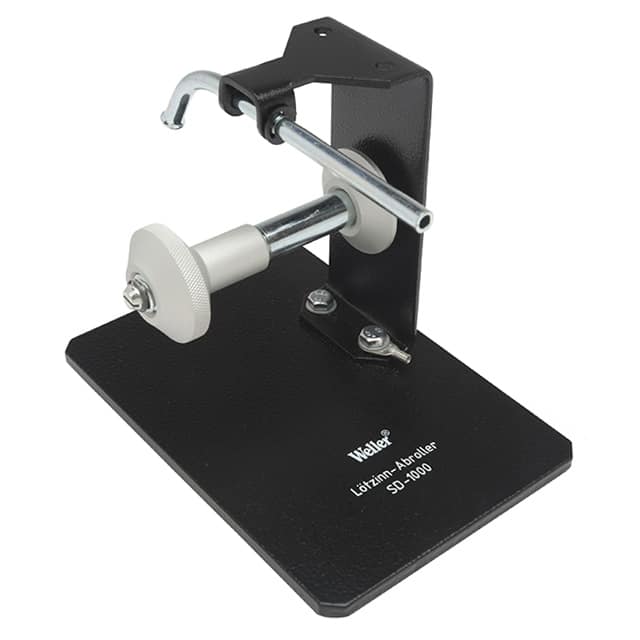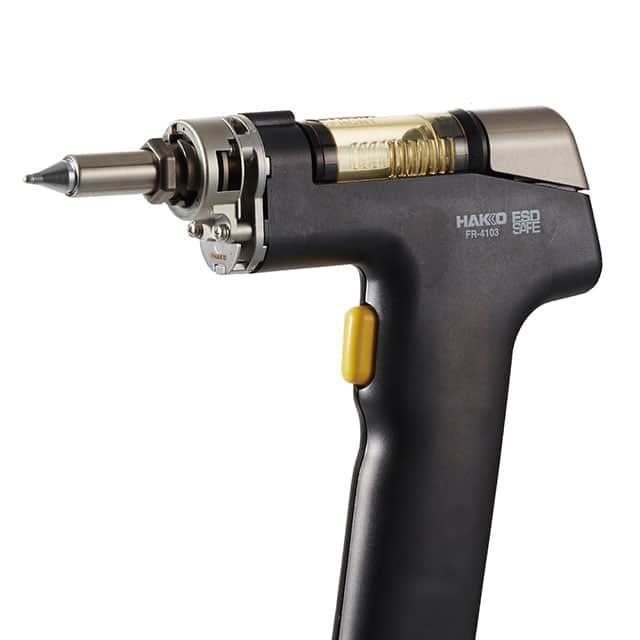Ⅰ. Soldering, Desoldering, Rework Products
Ⅱ. Physical Characteristics of Soldering, Desoldering, Rework Products
Ⅲ. Electrical Characteristics of Soldering, Desoldering, Rework Products
Soldering, desoldering, and rework products are used in the electronics industry for assembling, repairing, and modifying electronic components and circuit boards. Here are some examples of these products:

Soldering irons: Soldering irons are used to heat and melt solder, which is then used to join two metal surfaces together. Soldering irons come in a variety of sizes, shapes, and wattage ratings to accommodate different applications.
Solder wire: Solder wire is a thin metal wire that is made of a combination of tin and lead or other metals. It is used to join two metal surfaces together by melting it with a soldering iron and then allowing it to cool and solidify.
Flux: Flux is a chemical compound that is used in soldering to clean and prepare the metal surfaces to be soldered. It removes any oxidation or impurities and helps the solder to flow more easily.
Soldering stations: Soldering stations are advanced soldering tools that provide precise temperature control, digital displays, and other features that make soldering easier and more efficient. They also come with a soldering iron holder, a soldering tip cleaner, and other accessories.
Desoldering pumps: Desoldering pumps are used to remove solder from electronic components and circuit boards. They work by creating a vacuum that sucks the molten solder away from the component or board.
Desoldering wick: Desoldering wick is a braided copper wire that is coated with flux. It is used to remove excess solder from electronic components and circuit boards. The wick is placed over the solder and heated with a soldering iron, which causes the solder to melt and be absorbed by the wick.
Rework stations: Rework stations are advanced tools that combine soldering, desoldering, and hot air reflow capabilities. They are used to repair and modify electronic components and circuit boards, and they can handle a variety of soldering and desoldering tasks.

Soldering, desoldering, and rework products are essential tools for anyone working with electronic components and circuit boards. They come in a variety of sizes and types to accommodate different applications and skill levels. Using high-quality products and following proper procedures can help ensure successful and reliable soldering, desoldering, and rework operations.
Physical Characteristics of Soldering, Desoldering, Rework Products
Soldering, desoldering, and rework products come in various physical forms and characteristics to suit different applications and user preferences. Here are some common physical characteristics of these products:
Soldering irons: Soldering irons can be either corded or cordless, and they come in various wattage ratings and tip sizes. The tip size and shape can vary depending on the application, such as fine or broad tips for precision work or chisel or conical tips for general-purpose work. Soldering irons may have a variety of features such as temperature control, adjustable stand, and built-in LED lights.
Solder wire: Solder wire comes in different gauges, alloys, and flux cores. The diameter of the wire is selected based on the size of the components being soldered. The alloy used in the solder wire can vary depending on the application, such as lead-based, lead-free, or silver-based solder. The flux core can be rosin-based or water-soluble, depending on the application.
Flux: Flux comes in different forms, such as paste, liquid, and pen. Flux is used to remove oxidation and impurities from the metal surfaces to be soldered, and it can be either water-soluble or non-water-soluble. Water-soluble flux can be easily removed with water, while non-water-soluble flux requires a flux remover solution.
Desoldering pumps: Desoldering pumps can be manual or electric. Manual pumps require the user to manually create the vacuum by pressing a button, while electric pumps use a motor to create the vacuum. Desoldering pumps can come with different nozzle sizes and shapes to accommodate different applications.
Desoldering wick: Desoldering wick comes in different widths and lengths to suit different applications. The braid can be made of different materials, such as copper, brass, or alloy. Desoldering wick is coated with flux to aid in the removal of the solder.
Rework stations: Rework stations typically include a soldering iron, desoldering tool, and a hot air gun. The soldering iron can have various wattage ratings and tip sizes. The desoldering tool can be a pump or a hot air gun. The hot air gun can have various temperature and airflow settings.
The physical characteristics of soldering, desoldering, and rework products vary widely depending on the application and user preferences. Proper selection and use of these products can help ensure successful and reliable soldering, desoldering, and rework operations.
Electrical Characteristics of Soldering, Desoldering, Rework Products
When it comes to electrical characteristics, soldering, desoldering, and rework products can be categorized based on the amount of power they consume or generate. Here are some common electrical characteristics of these products:
Soldering irons: Soldering irons consume electrical power to generate heat to melt the solder wire. The power consumption can vary based on the wattage rating of the soldering iron. Higher wattage soldering irons generate more heat and can melt the solder wire faster, but they may require more power.
Solder wire: Solder wire is typically rated based on its diameter and the amount of flux in the core. The diameter of the solder wire determines the amount of electrical resistance it has, which can affect the amount of power needed to melt the solder. The flux core in the solder wire helps to remove oxidation and impurities from the metal surfaces being soldered, which can affect the quality of the solder joint.
Flux: Flux does not have any electrical characteristics as it is a chemical compound that aids in soldering and desoldering processes.
Desoldering pumps: Manual desoldering pumps do not have any electrical characteristics, but electric desoldering pumps consume electrical power to generate the vacuum needed to remove the molten solder.
Desoldering wick: Desoldering wick does not have any electrical characteristics as it is a braided metal wire coated with flux that aids in the removal of molten solder.
Rework stations: Rework stations consume electrical power to generate heat for soldering, desoldering, and rework operations. The power consumption can vary based on the wattage rating of the soldering iron, the hot air gun, and the desoldering tool.
The electrical characteristics of soldering, desoldering, and rework products are mainly related to power consumption or generation. It is essential to select the appropriate product for the specific task and to follow safety guidelines to prevent electrical hazards.



